HRT
Also known as menopause treatment
HRT, made easy.
Also known as menopause treatment
Secure delivery
UK clinicians
HRT, or hormone replacement therapy, is treatment that women take to help relieve menopausal symptoms like night sweats, hot flushes, vaginal dryness, poor sleep, brain fog, mood swings and lower sex drive.
How long you take it for can vary; many women take it for a year or two but some can take it for much longer than this. It’s a very individual thing. Certain types of HRT will also suit you more than others. Our clinician can talk you through the different options, and help you to decide which one is right for you.
As you enter the menopause, the levels of oestrogen that your body produces start to decrease, due to a shift in the balance of your sex hormones. This can cause symptoms such as hot flushes, night sweats and changes to your mood. HRT contains synthetic oestrogen, which makes up for the natural oestrogen that’s lost, and helps to tackle menopausal symptoms.
Combined forms of HRT also contain a second hormone: a synthetic form of progesterone. Without anything to keep it in check, oestrogen may increase your risk of getting endometrial cancer, as it can cause the womb lining to thicken more than it should. The progesterone in combined HRT offers protection from this, keeping the oestrogen in line and reducing the risk of womb cancer developing. It’s more convenient to take combined HRT as a pill or patch which contains both progesterone and oestrogen, but sometimes it’s better to take these separately.
If you’ve had a total hysterectomy though, because your womb has been removed, you’ll usually be prescribed oestrogen only HRT.
The menopause can also cause your bones to become more fragile and more prone to breaking. HRT can provide some protection against osteoporosis by helping the bones to stay strong. HRT isn’t a primary treatment for osteoporosis though, so if you’re looking to use it for this purpose, just let our clinician know and they can chat to you about it.
The major benefit of HRT is that it can help to ease many symptoms of the menopause (by as much as 75%, so quite a lot then).
The oestrogen and progesterone in combined HRT make a good team. The oestrogen helps to manage symptoms of the menopause whilst the progesterone helps to keep it in check and reduces your cancer risk.
And there’s the protection it can provide from osteoporosis too, when the bones in the body are more at risk of breaking or becoming brittle after the menopause.

How we source info.
When we present you with stats, data, opinion or a consensus, we’ll tell you where this came from. And we’ll only present data as clinically reliable if it’s come from a reputable source, such as a state or government-funded health body, a peer-reviewed medical journal, or a recognised analytics or data body. Read more in our editorial policy.
There are a number of different types of HRT available, and we can talk you through your options.
Tablets are one of the most widely used types of HRT. There are tablet options for both combined HRT and oestrogen only HRT, and you normally take them once every day. They do carry a slightly increased risk of blood clots and breast cancer than other forms of HRT treatment, but it is only a small increase (nine more women develop a blood clot for every 10,000 women each year). Because of this increased breast cancer risk, make sure you attend your breast cancer screening (mammogram) appointments.
If you find having to remember to take a tablet every day a bit inconvenient, skin patches may be a more low maintenance treatment for you and they’re safer for your heart than tablets. You stick HRT patches to your skin, and change them twice a week. They’re available as a combined HRT treatment or as an oestrogen only medication. Skin patches can be a strong option if you’re prone to side effects such as indigestion, and they don’t increase your risk at all of developing a blood clot, unlike tablets.
More and more women are starting to use oestrogen gel for menopausal symptoms, and it’s probably because it’s really easy to use. You just need to rub it onto your skin once a day. It doesn’t increase your blood clot risk either, but if you still have your womb, you’ll need to use an additional progesterone, to limit your chances of getting womb cancer.
The oestrogen spray is easy to use by simply applying it to your skin, and it dries up fast. Most people start by taking the lowest dose, which is one spray a day, but your doctor might increase your dose if needed. Like the gel and the patch, it doesn’t increase the risk of clots, but if you still have a womb you’ll need to take progesterone so that your risk of getting cancer doesn’t increase.
They’re not particularly common, but you can also get a HRT implant, which releases oestrogen slowly into the body and doesn’t need to be replaced for several months at a time. You’ll need to take a separate progesterone though if you’ve still got your womb.
The coil is a small device that also acts as birth control, it’s inserted into your womb by a doctor or a nurse. It slowly releases a type of progesterone called levonorgestrel into your system. Because it lasts for about 5 years, it's usually a good choice if you're not keen on taking tablets or changing patches regularly.

How we source info.
When we present you with stats, data, opinion or a consensus, we’ll tell you where this came from. And we’ll only present data as clinically reliable if it’s come from a reputable source, such as a state or government-funded health body, a peer-reviewed medical journal, or a recognised analytics or data body. Read more in our editorial policy.
It depends on a number of factors, like what stage of the menopause you’re at, how sensitive you are to certain levels of hormones, and whether you prefer to take tablets or use patches, for example.
Whether or not you’ve had a total hysterectomy is also a factor, and if you have certain health conditions, that can play a big part too.
Here are your options. Our clinician can talk you through them, and recommend safe and suitable HRT treatments just for you.
If you’re getting menopausal symptoms and still having your period, combined sequential (or cyclical) HRT treatments are usually the recommended options. Combined HRT products like Elleste Duet and Evorel Sequi patches are known as ‘combined’ treatments because they contain two hormones: a progesterone and an oestrogen.
With sequential HRT, you start your cycle with oestrogen only tablets (or patches, gel, spray or implants) and then take a combination of oestrogen and progesterone tablets (or patches) part way through your cycle.
You’ll see a regular bleed once per month with sequential HRT.
If you haven’t had a period for one year, you’re usually considered to be postmenopausal, and continuous combined HRT products like Indivina and Evorel Conti tend to be the suggested route. With continuous combined HRT treatments, you take a combination of oestrogen and progesterone every day, without a break (hence ‘continuous’). So they’re a little different to sequential HRT products. You won’t see any bleeding with continuous HRT, but if it’s less than a year since your last natural period, starting continuous HRT might lead to some unpredictable bleeding. So it’s best to start with sequential HRT.
Oestrogen only treatments such as Elleste Solo and Estradot patches are normally recommended for women who have had their womb removed during a hysterectomy. They can also be used by women who still have their womb, but a separate progesterone is required (either as a tablet, a vaginal capsule, or a gel for the skin). Like continuous combined HRT, you typically take oestrogen every day, without a break.
Side effects of HRT may also vary from one woman to the next, so some HRT medications won’t be safe (or suitable) for some women. If you’re more sensitive to oestrogen, you may be better suited to lower-dose HRT products. And if you have a particular health condition, this can mean that certain HRT products won’t be safe for you to use either.
Our clinician can identify which treatments are appropriate for you and which aren’t, and make recommendations based on your medical background.
There’s a prescription HRT medicine called Tibolone (branded as Livial) that’s used to relieve menopausal symptoms and as a preventative treatment for osteoporosis. Tibolone is the active ingredient, so it’s a bit different to other forms of HRT, which contain oestrogen and progesterone (or just oestrogen).
It can help to ease symptoms like hot flushes, reduced sex drive and low mood, but research has suggested that Tibolone may be less effective than combined HRT. It’s also only a suitable option for women who are postmenopausal (so women who had their last period over a year ago).
Tibolone can produce side effects, including breast pain, vaginal discharge, pain in the pelvis, itching and abdominal pain.
The slightly increased risks of breast cancer and stroke that HRT carry are similar with Tibolone.
Clonidine is another prescription treatment that’s sometimes used to help tackle symptoms like flushing and night sweats. It’s a tablet that you take two or three times a day, and it has no effect on hormone levels, so there’s no increased risk of breast cancer for example. Studies suggest that it only has a small impact on easing flushing and night sweats though, and it can have unpleasant side effects too.
Some studies show that medicinal plants including sage herb, black cohosh, evening primrose, ginkgo biloba, licorice, red clover and others can be effective in treating symptoms of menopause. For example, black cohosh roots contain terpene glycosides which bind to the oestrogen receptors, similar to conventional hormonal therapy. But much like any other medication, it comes with potential side effects, like stomach and gut inflammation, nausea, and vomiting.
If you’re using herbal treatments alongside other conventional medications, make sure to tell your clinician. This is really important because mixing them can cause possible side effects.
Cognitive behavioural therapy (CBT) is a type of talking therapy which can help with psychological symptoms like mood swings and anxiety, and also physical symptoms like hot flushes and night sweats. If it’s something you’re interested in, you can get it through NHS.

How we source info.
When we present you with stats, data, opinion or a consensus, we’ll tell you where this came from. And we’ll only present data as clinically reliable if it’s come from a reputable source, such as a state or government-funded health body, a peer-reviewed medical journal, or a recognised analytics or data body. Read more in our editorial policy.
Have something specific you want to know? Search our info below, or ask our experts a question if you can’t find what you’re looking for.
Hormonal Changes in Menopause and Implications on Sexual Health. The Journal of Sexual Medicine, 4, pp.220–226.
Menopause hormone therapy: latest developments and clinical practice. Drugs in Context. NCBI. 2019; 8: 212551.
Use of hormone replacement therapy and risk of venous thromboembolism: nested case-control studies using the QResearch and CPRD databases. BMJ. 2019;364:k4810.
Short-term and long-term effects of tibolone in postmenopausal women.
Clonidine 25mcg Tablets BP - Summary of Product Characteristics (SmPC) - (emc).
Table 1: Summary of HRT risks and benefits during current use and current use plus post-treatment from age of menopause up to age 69 years, per 1000 women with 5 years or 10 years use of HRT.
Table 1: Summary of HRT risks and benefits during current use and current use plus post-treatment from age of menopause up to age 69 years, per 1000 women with 5 years or 10 years use of HRT.
Use of hormone replacement therapy and risk of venous thromboembolism: nested case-control studies using the QResearch and CPRD databases. BMJ. 2019;364:k4810.
Table 1: Summary of HRT risks and benefits during current use and current use plus post-treatment from age of menopause up to age 69 years, per 1000 women with 5 years or 10 years use of HRT.
Menopausal Hormone Therapy and Risk of Endometrial Carcinoma Among Postmenopausal Women in the European Prospective Investigation into Cancer and Nutrition. American Journal of Epidemiology, 172(12), pp.1394–1403.
Is there a role for menopausal hormone therapy in the management of postmenopausal osteoporosis? Osteoporosis International, 31(12), pp.2271–2286.
Postmenopausal hormone therapy: risks and benefits. Nature Reviews. Endocrinology, 9(4), pp.216–227.
Effects of transdermal versus oral hormone replacement therapy in postmenopause: a systematic review. Archives of Gynecology and Obstetrics, 307(6).
Tibolone: benefit-risk balance.
A review of effective herbal medicines in controlling menopausal symptoms. Electronic Physician, 9(11), pp.5826–5833.
Progesterone: Review of safety for clinical studies. Experimental and Clinical Psychopharmacology, 15(5), pp.427–444.
Gina 10 micrograms vaginal tablets - Patient Information Leaflet (PIL).
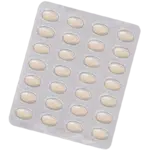
Combined continuous HRT pills, at a lower dose. Good if you're sensitive to hormones.
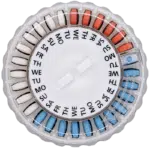
Combined treatment for menopause relief. Sequential pills for women who no longer have periods.

Combined sequential HRT tablets. For treating menopause symptoms if you still have periods.
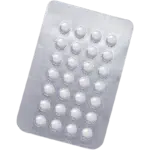
Oestrogen-only HRT patches and pills. For if you've had a hysterectomy, or used with progestins.
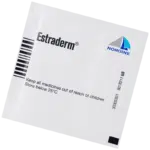
Oestrogen-only HRT patch. Change twice a week and reduce menopause symptoms up to 75%.
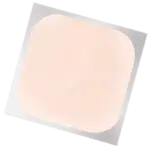
Combined continuous HRT patch. Used it's been more than 12 months since your last period.

Sequential dose patch. Use to manage menopause symptoms if you still have periods.
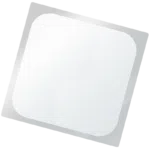
Combined HRT skin patch used by women who've had a year or more since their last period.

The natural progesterone treatment. Taken alongside oestrogen to relieve symptoms of menopause.
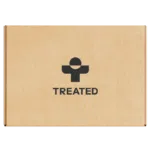
Oestrogen-only tablet that relieves menopausal symptoms. Often prescribed for women who have had a hysterectomy.

Testosterone gel you can rub onto your skin. Helps with loss of libido.

Like Elleste Duet, but continuous. Which makes it best suited to postmenopausal women.

Registered with GMC (No. 4624794)
Meet Daniel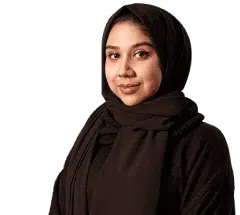
Registered with GPhC (No. 2202465)
Meet Sanjeda
Registered with GPhC (No. 2070724)
Meet Craig
Always read the leaflet that comes with your medication and tell us about any side effects you get.
We know health, but you know you.
Our experts tell you what’s safe, but you decide what’s best.
Answer a few questions and tell us about yourself. Get tailored advice from our clinicians so you can choose better.

Choose your treatment and how often you have it delivered.
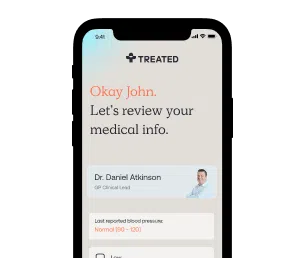
We know things change. It’s the nature of life. We’ll check in regularly to make sure your treatment is still right for you.
Pause. Change. Skip. Start again. Any time you like.
Here are some other things we can help with.
Personalised advice. Effective antibiotic treatments to restore balance. Get the help you need for BV.
Pill, patch, ring. We offer a range of birth control options so you can choose the one that's right for you.
Treatments to make your period lighter and more manageable. We'll help you to find the right option for you.
Prevent unplanned pregnancy with emergency contraception. Highly effective Plan B treatments, delivered fast.
Event planned? Period due? Take period delay pills a few days before to delay your bleeding.
Get tailored advice from our expert team, and choose from a range of treatments to reduce symptoms.
Tablets, pessaries. Chat to our clinicians to get confidential advice and treatment for yeast infections.
All the info related to menopause (hrt) you could ever need.
Take a look at our health guides.
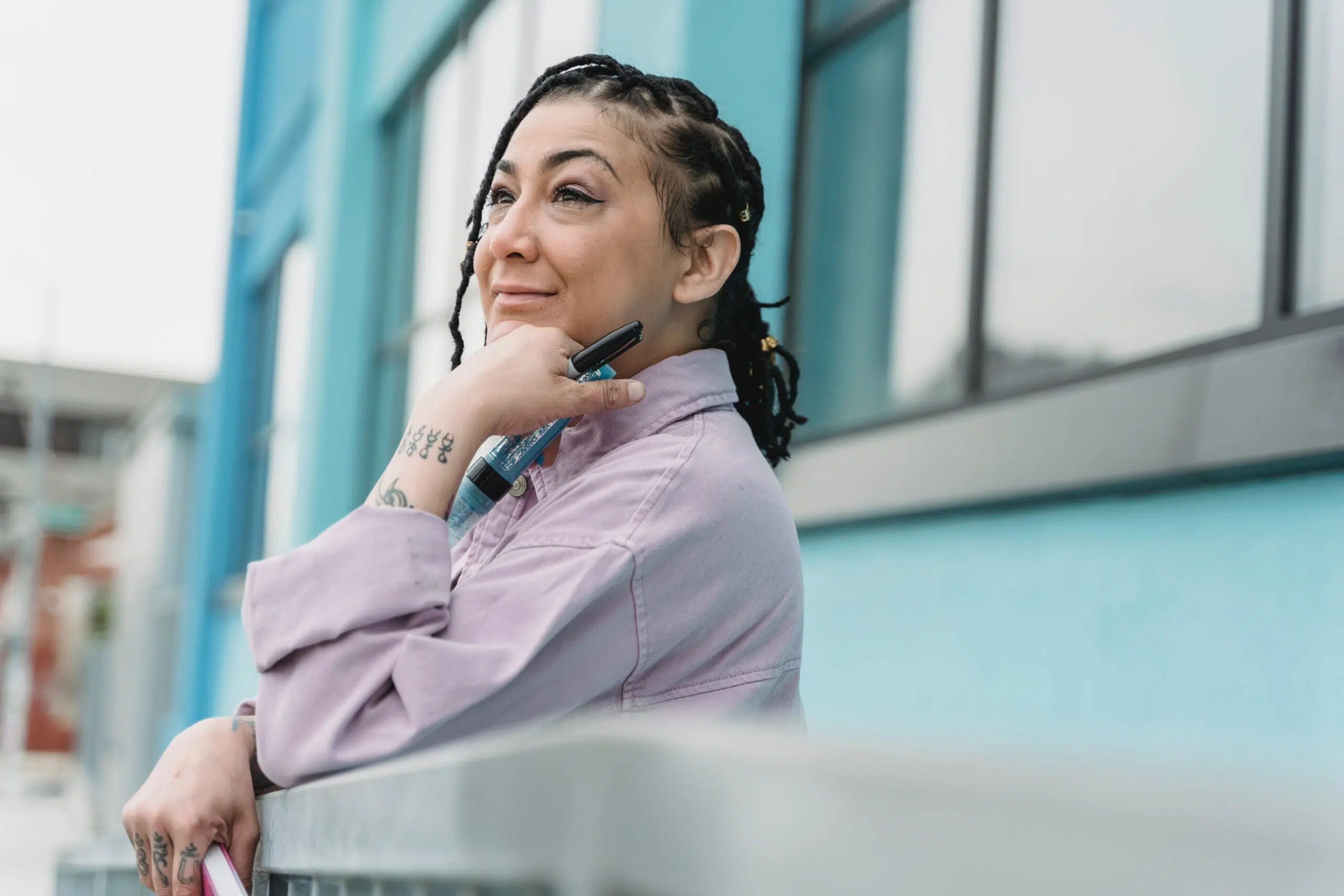

UK Find treatment Male health Erectile dysfunction Hair loss Premature ejaculation Benign prostatic hyperplasia See more treatments Female health Contraception – Combined Pills, Mini Pills HRT Heavy periods Vaginal thrush Morning after pill Endometriosis Morning sickness Period delay See more treatments General health Asthma Diabetes Weight loss Stop smoking Acid Reflux (GORD) Allergic Reaction (Anaphylaxis) […]
Read more
We asked you to participate in our Let’s Talk Menopause survey – 12 questions, part ‘quiz’, part opinion poll, to help us get a feel for what you know, and how you feel about menopause. Here's what you said.
Read moreWe're making healthcare more about you. Sign up to our newsletter for personalised health articles that make a difference.
Disclaimer: The information provided on this page is not a substitute for professional medical advice, diagnosis, or treatment. If you have any questions or concerns about your health, please talk to a doctor.
We couldn't find what you're looking for.
Here's everything we treat. Or, if you're looking for something we don't have yet, you can suggest something.
If there’s a particular treatment or condition you’re looking for, tell us and we’ll look into it for you.
Submit your question here, or tell us if you’ve found an issue on our site.
We’ll get back to you very soon. We aim to respond to all queries in one working day.
You’re signed up to our newsletter. Keep an eye on your inbox for our latest update.
By clicking 'Subscribe now' you're agreeing to our Privacy Policy.
We’ve sent you an email asking you to confirm your email address.